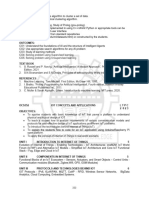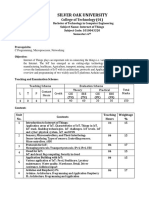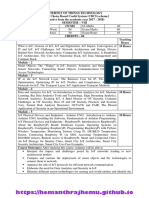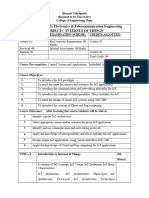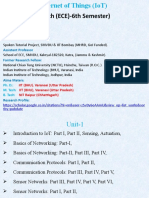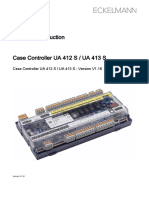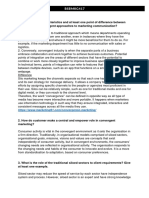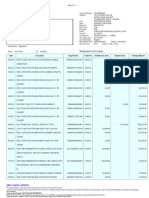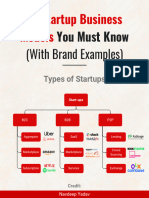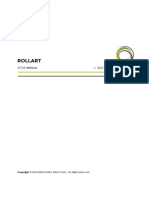Institute of Engineering & Technology, Devi Ahilya University, Indore, (M.P.), India.
(Scheme Effective from July 2018)
Devi Ahilya University, Indore, India IV Year B.E. (Electronics and
Institute of Engineering & Technology Telecommunication)
Subject Code & Name Instructions Hours per Credits
Week
ETR8E1 L T P L T P Total
INTERNET OF THINGS 3 1 2 3 1 1 5
Duration of Theory
Paper: 3 Hours
Learning Objective:
Assess the genesis and impact of IoT applications, architectures in real world.
Illustrate diverse methods of deploying smart objects and connect them to network.
Compare different Application protocols for IoT.
Infer the role of Data Analytics and Security in IoT.
Identify sensor technologies for sensing real world entities and understand the role of IoT
in various domains of Industry.
Prerequisite: Computer Network, C Language
COURSE CONTENTS
Unit I
IoT Introduction, Genesis of IoT, IoT and Digitization, IoT Impact, Convergence of IT and IoT,
IoT Challenges, IoT Network Architecture and Design, Drivers Behind New Network
Architectures, Comparing IoT Architectures, A Simplified IoT Architecture, The Core IoT
Functional Stack, IoT Data Management and Compute Stack.
Unit II
Smart Objects: The “Things” in IoT, Sensors, Actuators, and Smart Objects, Sensor Networks,
Connecting Smart Objects, Communications Criteria, IoT Access Technologies.
Unit III
IP as the IoT Network Layer, The Business Case for IP, The need for Optimization, Optimizing
IP for IoT, Profiles and Compliances, Application Protocols for IoT, The Transport Layer, IoT
Application Transport Methods.
Unit IV
Data and Analytics for IoT, An Introduction to Data Analytics for IoT, Machine Learning, Big
Data Analytics Tools and Technology, Edge Streaming Analytics, Network Analytics, Securing
IoT, A Brief History of IoT Security, Common Challenges in IoT Security, Formal Risk
Analysis Structures: OCTAVE and FAIR, The Phased Application of Security in an Operational
Environment
� Institute of Engineering & Technology, Devi Ahilya University, Indore, (M.P.), India.
(Scheme Effective from July 2018)
Unit V
IoT Physical Devices and Endpoints - RaspberryPi: Introduction to RaspberryPi, About the
RaspberryPi Board: Hardware Layout, Operating Systems on RaspberryPi, Configuring
RaspberryPi, Programming RaspberryPi with Python, Wireless Temperature Monitoring System
Temperature Sensor, Connecting Raspberry Pi via SSH, Accessing Temperature from sensors,
Remote access to RaspberryPi, Smart and Connected Cities, An IoT Strategy for Smarter Cities,
Smart City IoT Architecture, Smart City Security Architecture, Smart City Use-Case Examples.
Learning Outcomes:
At the end of the course, the students would be:
Interpret the impact and challenges posed by IoT networks leading to new architectural
models.
Compare and contrast the deployment of smart objects and the technologies to connect
them to network.
Appraise the role of IoT protocols for efficient network communication.
Elaborate the need for Data Analytics and Security in IoT.
Illustrate different sensor technologies for sensing real world entities and identify the
applications of IoT in Industry.
BOOKS RECOMMENDED:
[1]. David Hanes, Gonzalo Salgueiro, Patrick Grossetete, Robert Barton, Jerome Henry,"IoT
Fundamentals: Networking Technologies, Protocols, and Use Cases for the Internet of
Things”, 1 st Edition, Pearson Education
[2]. Srinivasa K G, “Internet of Things”, CENGAGE Leaning India, 2017.
[3]. Vijay Madisetti and Arshdeep Bahga, “Internet of Things (A Hands-on-Approach)”, 1 st
Edition, VPT, 2014.
[4]. Raj Kamal, “Internet of Things: Architecture and Design Principles”, 1st Edition, McGraw
Hill Education, 2017.
List of Practical Assignments:
1. To study the architecture of application board of Raspberry Pi.
2. To demonstration the OS (Debian) for RPi in a SD card preparation, configuration of
Raspberry Pi during first booting and use of remote SSH like putty
3. To demonstrate the basic linux commands on Raspberry pi.
4. To create a database & Store the value in Raspberry Pi.
5. To install Android on Raspberry Pi.
6. To Setup R Pi first time without using screen, mouse, keyboard.
7. To interface ADC at GPIOs of Raspberry Pi for measuring analog voltage.























